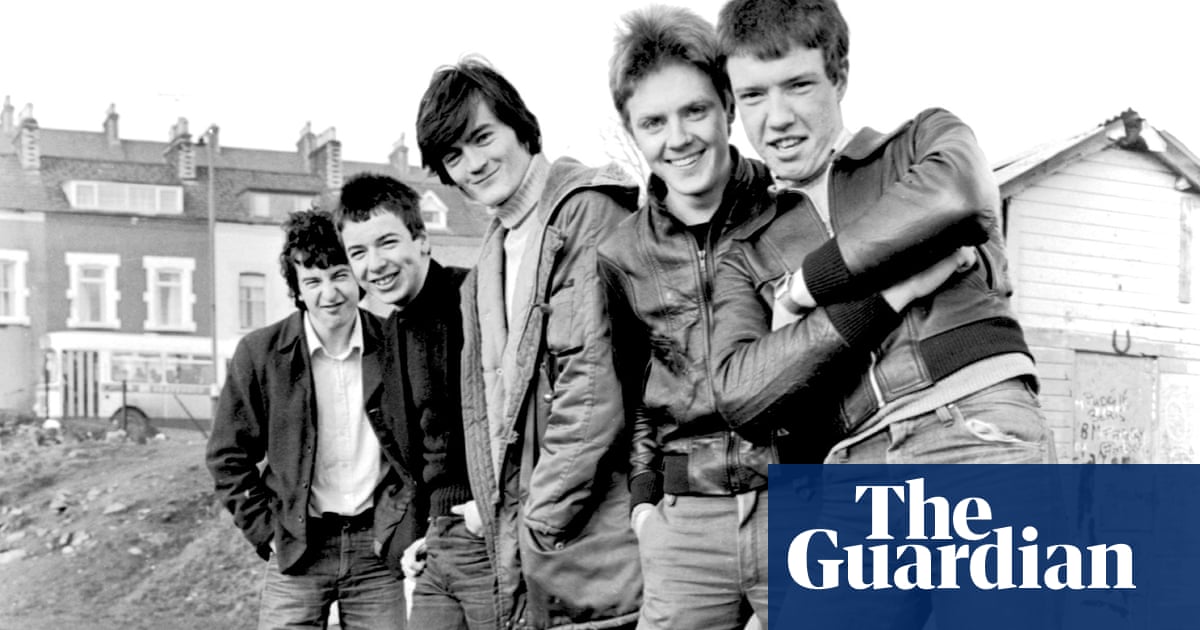
There is one man with very personal reasons for finding the scenes of sectarian intimidation in Sir Kenneth Branagh’s film homage to his home city particularly haunting – his first cousin, Martin Hamilton.
Hamilton, who grew up with Branagh and his family in inner-city north Belfast, says the images of Catholic families being forced out of the mainly Protestant district brought back painful memories of his own fractured friendships that were lost in the Troubles.
Branagh’s movie Belfast – hotly tipped for an Oscar – is a memoirish tale of how the Northern Ireland conflict that erupted in 1969 forced his family to escape the gathering sectarian storm.
Watching the darker moments of Belfast when Catholics are driven from their homes, Hamilton recalled how a fiercely close boyhood friendship was broken up. “Those parts of the film really resonated with me when I first saw Ken’s film,” he said.
“I was living across from Ken and his family, in flats on Skegoneil Avenue in 1969. My best friend growing up was a lad from a Catholic family. We played football together, we got into fights together – although never about religion – and we made up frequently after them. We were inseparable as boys.
“When the Troubles broke out, people from outside our area, some of whom were Protestants moving out of mainly Catholic districts, started to stir things up in the flats.
“They started asking why Catholics were still living among us and the atmosphere they created was so hostile that these Catholic families, including my friend’s, felt too insecure to stay.
“They moved out just like the people forced from their homes by the mob in Ken’s film. Ken captured this tragic turn of events so well in the movie. It was so very true to what was sadly happening back then,” he said.
Hamilton, who will be 70 this year, described Branagh and his older brother Bill as “more like my other brothers rather than cousins”.
He said: “Because my dad was working in the shipyard and my mum managed a local Co-op store, I used to go to my aunt Frances and uncle Billy’s house after school. I knocked around more with his brother Bill as we were about the same age. I remember Ken at the time was quiet, shy.”
As in the movie, Branagh and his family leave strife-torn Belfast for a new life in England. But when Branagh returned to his native city in the late 1970s to star in a series of critically acclaimed TV dramas written by Graham Reid – the Billy plays – his extended family were there to protect him.
Hamilton told the Observer he was deployed to ensure his actor-cousin with the English accent wouldn’t be mistaken for a British soldier.
“Ken stayed with my mum and dad as Aunt Frances was worried about him. She was concerned that with his accent someone might think he was a soldier, which was a very dangerous thing to be in Belfast in the 1970s.
“I was tasked with driving him over from the north of the city to the filming in the east. Many years later when he became famous, he spoke about those wet and windy nights in Belfast when his cousin drove him about. He never ever forgot about his roots or his family.”
Branagh’s film recreates the working-class Victorian terraced streets and alleyways of the Mountcollyer Street/York Road area at the end of the 1960s. Today the district is depopulated, with row upon row of bricked up houses, while Mountcollyer Street where the Branagh clan lived is hardly a street at all any more, but rather a cul de sac.
Those who grew up nearby in the Tigers Bay area, such as Karen Clarkin, said the set of Belfast with its corner shops, street lamps and yards with outside toilets is faithful to the time and place that Branagh’s direction captures.
“My granny was friends with Ken’s grandmother Frances who lived across from her. His granny was always talking about her grandson who she insisted was always going to be a great actor.
“But it was the scenes in the film of his grandfather (played by fellow Northern Ireland actor Ciarán Hinds) that really got to me. Him sitting on the outside toilet drinking his mug of tea, all his tools and his knick-knacks reminded me of my own grandad in Tigers Bay. I loved the film because it brought home what this part of Belfast really was like,” Clarkin said.
Then she pointed to a nearby structure in a green space Branagh would once have played in during the late 1960s – Alexandra Park.
During the Troubles the park was often a nightly battleground for rival rioting Protestant and Catholic youths. The violence became so bad that locals living on either side of what was once an invisible sectarian dividing line demanded a permanent barrier to keep the mobs apart. A giant steel “peace” structure was built, and its foundations were laid on 1 September 1994, the first day of the historic IRA ceasefire.
Although it can be opened during the day, this 3-metre reinforced corrugated iron barrier remains a near-permanent “border” creating separate Protestant and Catholic zones in the park.
While the film contains joyous moments and is a love letter to a city Branagh clearly adores, Belfast ends with captions that commemorate the things lost during 35 years of conflict. The director remembers those who had to leave, those who remained and endured, and finally those that were lost for ever in the violence.
The film has struck a chord with the generations who lived through the Troubles. After a screening at the art deco Strand cinema in east Belfast last Tuesday several elderly and middle-aged viewers had tears in their eyes as they left the movie house.
That sentiment of loss and futility is felt too by Hamilton, who has watched his famous cousin’s award-winning movie twice.
“I can still remember the name of every family in our flats that had to get out. They had good neighbours, but it was the bad ones that forced them to go. I suppose if Ken’s film has any message for me personally it is that Northern Ireland can be a great place if they’d just leave us alone.”












